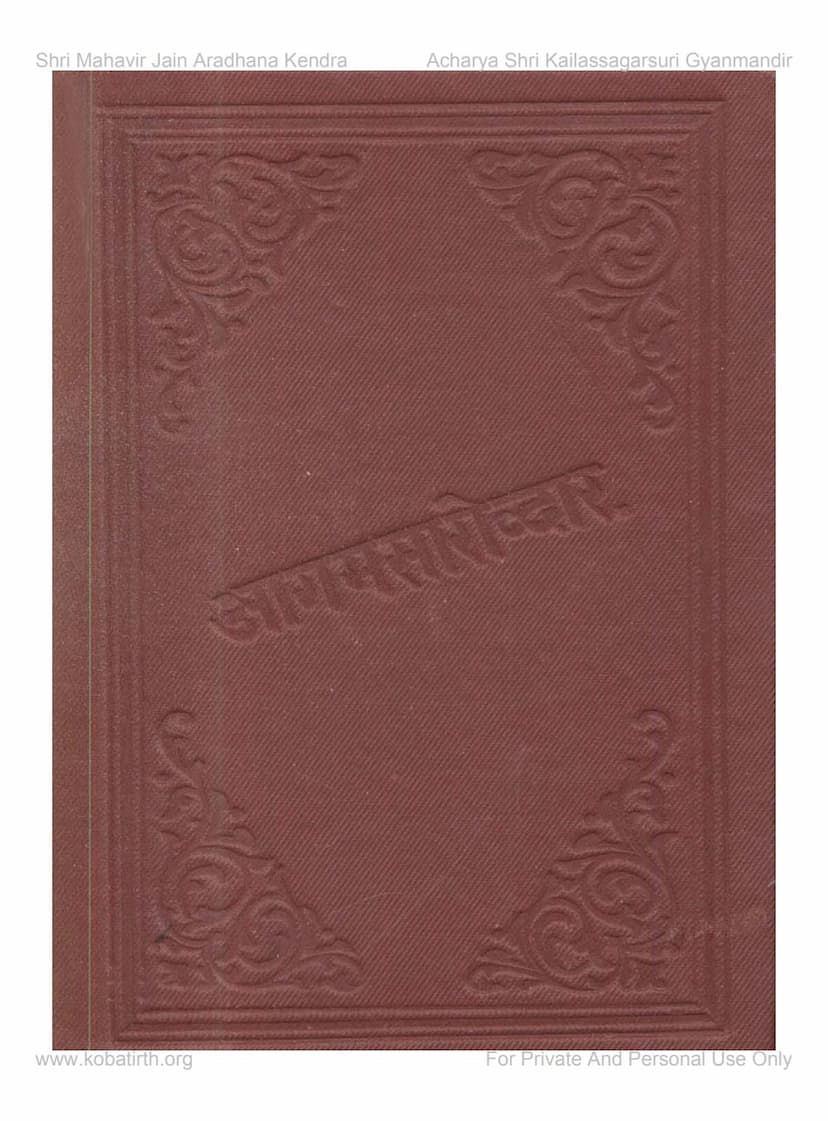Agamsaroddhar
Added to library: September 1, 2025

Summary
This document is a scanned copy of the Jain text "Agamsaroddhar" by Devchandramuni, published by Adhyatma Gyan Prasarak Mandal. The text appears to be a Gujarati language work. Here's a summary of its content based on the provided pages:
Book Title: Agamsaroddhar Author: Devchandramuni Publisher: Adhyatma Gyan Prasarak Mandal
Overall Content:
The document contains the Jain text "Agamsaroddhar" which includes explanations and discussions on various core Jain philosophical concepts. It seems to be a compilation or a commentary that elucidates complex Jain doctrines. Interspersed with the main text are sections like "Shuddhipatra" (errata/correction slip) and a catalog of other publications by the same publisher, indicating it's part of a larger series. The latter part of the document also includes "Adhyatmageeta" by Shrimad Devchandramuni, with a commentary by Shrimad Kunvarvijayji (also known as Amikuvarji).
Key Sections and Concepts Discussed:
-
Agamsar (Core of Agamas): This appears to be the primary text. Based on the index and the initial pages, it delves into:
- Nature of Knowledge (Jnan Swarup): Discussing the different types and essence of knowledge in Jainism.
- Nature of Six Substances (Chha Dravya Nu Swarup): Elaborating on the six fundamental realities in Jain philosophy (Jiva, Pudgala, Dharma, Adharma, Akasha, Kala).
- Seven Nayas (Seven Standpoints/Approaches): Explaining the different perspectives (Nayas) used to understand reality in Jainism.
- Four Nikshepas (Four Categories of Classification): Discussing Nam, Sthapana, Dravya, and Bhav as methods of classification.
- Icon Worship (Pratima Puja): A significant portion seems dedicated to explaining and justifying the practice of idol worship, addressing potential objections. This is evidenced by extensive discussions and references to scriptures like "Prashna Vyakarana Sutra" and "Bhagavati Sutra" regarding the validity and meaning of Pratima Puja.
- Gunasthana Vichar (Stages of Spiritual Development): A detailed exposition of the fourteen stages of spiritual progress according to Jainism, outlining the mental and spiritual states at each stage.
- Saptabhangi (The Sevenfold Predication): The doctrine of Syadvada, stating that reality can be described from seven different perspectives.
- Other concepts: Mention of virtues (Vrat), meditations (Dhyana), emotions/contemplations (Bhavana), right faith (Samyakitva), and the fivefold synthesis (Panchsamavaya).
-
Adhyatmageeta (Hymn of Spiritual Essence): This section features a devotional and philosophical text explaining the nature of the soul, its relation to the universe, and the path to liberation. It uses poetic language and metaphors to convey spiritual truths. The commentary by Amikuvarji aims to make these profound teachings accessible.
-
Nays and Nikshepas: The text provides in-depth explanations and examples for the various Nayas (e.g., Naigama, Sangraha, Vyavahara, Rujusutra, Shabda, Samabhirudha, Evambhuta) and Nikshepas (Nama, Sthapana, Dravya, Bhava), demonstrating their application in understanding Jain principles.
-
Debate on Pratima Puja: A substantial part of the text appears to address the practice of idol worship, presenting scriptural evidence and arguments to support it. It seems to counter potential criticisms or misunderstandings by explaining the underlying philosophy and significance of this practice within Jainism. This includes detailed references and interpretations of specific verses from authoritative Jain scriptures.
-
Other Sections:
- Shuddhipatra: Indicates corrections made to the text.
- Catalog: Lists other works published by the Adhyatma Gyan Prasarak Mandal, showing the scope of their spiritual and educational literature.
Overall Purpose and Tone:
The "Agamsaroddhar" seems to be an educational and devotional work intended to provide a clear and comprehensive understanding of fundamental Jain teachings. The author, Devchandramuni, is presented as a knowledgeable scholar ("Adhyatma Gnanrasik Dravyanuyogana Samarth Gnyata"). The tone is scholarly, devotional, and explanatory, aiming to guide spiritual seekers towards the right path. The inclusion of "Adhyatmageeta" with commentary suggests a focus on the practical and experiential aspects of Jain spirituality alongside doctrinal explanations.